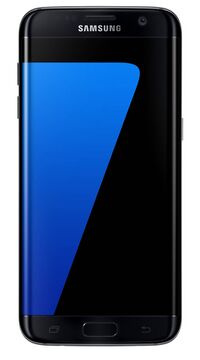Samsung Galaxy S7 Edge (samsung-hero2lte): Difference between revisions
No edit summary |
No edit summary |
||
| Line 68: | Line 68: | ||
* Exynos (at least modern exynos) has a different dt.img format to Qualcomm devices, requiring a special dtbtool to go along with it. | * Exynos (at least modern exynos) has a different dt.img format to Qualcomm devices, requiring a special dtbtool to go along with it. | ||
There is one included in the kernel source we have, which should make the dtb automatically, | There is one included in the kernel source we have, which should make the dtb automatically, | ||
but it always fails with | but it always fails with <code>error: failed to read dtb ''; Segmentation fault</code>. | ||
However, we should be able to extract this from e.g. [https://github.com/LineageOS/android_hardware_samsung/tree/lineage-16.0/dtbhtool LineageOS], package it and make | However, we should be able to extract this from e.g. [https://github.com/LineageOS/android_hardware_samsung/tree/lineage-16.0/dtbhtool LineageOS], package it and make | ||
some modifications to pmbootstrap to handle these. | some modifications to pmbootstrap to handle these. | ||
Revision as of 17:54, 27 January 2019
 Samsung Galaxy S7 Edge | |
| Manufacturer | Samsung |
|---|---|
| Name | Galaxy S7 edge |
| Codename | samsung-hero2lte |
| Released | 2016 |
| Hardware | |
| Chipset | Samsung Exynos 8890 Octa |
| CPU | Exynos M1 (4x @ 2.3GHz) and ARM Cortex-A53 (4x @ 1.6GHz) |
| GPU | ARM Mali T880 MP12 |
| Display | 1440x2560 AMOLED |
| Storage | 32GB (upgradeable via microSD) |
| Memory | 4GB |
| Architecture | aarch64 |
| Software | |
| Original software | Android 6.0 on Linux 3.18.14 |
| postmarketOS | |
| Category | testing |
| Pre-built images | no |
| Flashing |
Partial |
|---|---|
| USB Networking |
Works |
| Internal storage |
No data |
| SD card |
No data |
| Battery |
No data |
| Screen |
Broken |
| Touchscreen |
Works |
| Multimedia | |
| 3D Acceleration |
No data |
| Audio |
No data |
| Camera |
No data |
| Camera Flash |
No data |
| Connectivity | |
| WiFi |
No data |
| Bluetooth |
No data |
| GPS |
No data |
| NFC |
No data |
| Modem | |
| Calls |
No data |
| SMS |
No data |
| Mobile data |
No data |
| Miscellaneous | |
| FDE |
No data |
| USB OTG |
No data |
| HDMI/DP |
No data |
| Sensors | |
| Accelerometer |
No data |
| Magnetometer |
No data |
| Ambient Light |
No data |
| Proximity |
No data |
| Hall Effect |
No data |
| Haptics |
No data |
| Barometer |
No data |
Contributors
- WilliamO7
Maintainer(s)
- WilliamO7
How to enter flash mode
When the device is fully powered off, hold Power, Volume Down and Home for a few seconds.
A (turquoise) download mode warning screen should appear, press Volume Up to confirm.
Installation
It is recommended to sideload an android recovery zip through twrp for the easiest process, since heimdall freaks out about the subpartitions in SYSTEM
and won't move past ~7%.
pmbootstrap install --no-fde --android-recovery-zip
pmbootstrap flasher --method=adb sideload
What is tested and works
- The kernel (with prebuilt dtb)
- USB Networking (you might have to set its ip address beforehand though)
- Booting into the main OS (past initramfs), and therefore SSH.
Quirks
- Exynos (at least modern exynos) has a different dt.img format to Qualcomm devices, requiring a special dtbtool to go along with it.
There is one included in the kernel source we have, which should make the dtb automatically,
but it always fails with error: failed to read dtb ; Segmentation fault.
However, we should be able to extract this from e.g. LineageOS, package it and make
some modifications to pmbootstrap to handle these.
- The display stays on the splashscreen, and does not change at all.
I did get some interesting messages spammed in kmsg, referring to the DECON display controller on the S7: decon_pan_display: decon0 state(0), UNBLANK missed. Don't know much about this though, apart from the fact that it has some quite unique architecture. Using msm-fb-refresher didn't help.
- Camera drivers (Samsung FIMC-IS2) (and accompanying flash LED drivers, controlled by a Samsung PMIC) needed to be disabled in the kernel to prevent boot loops.